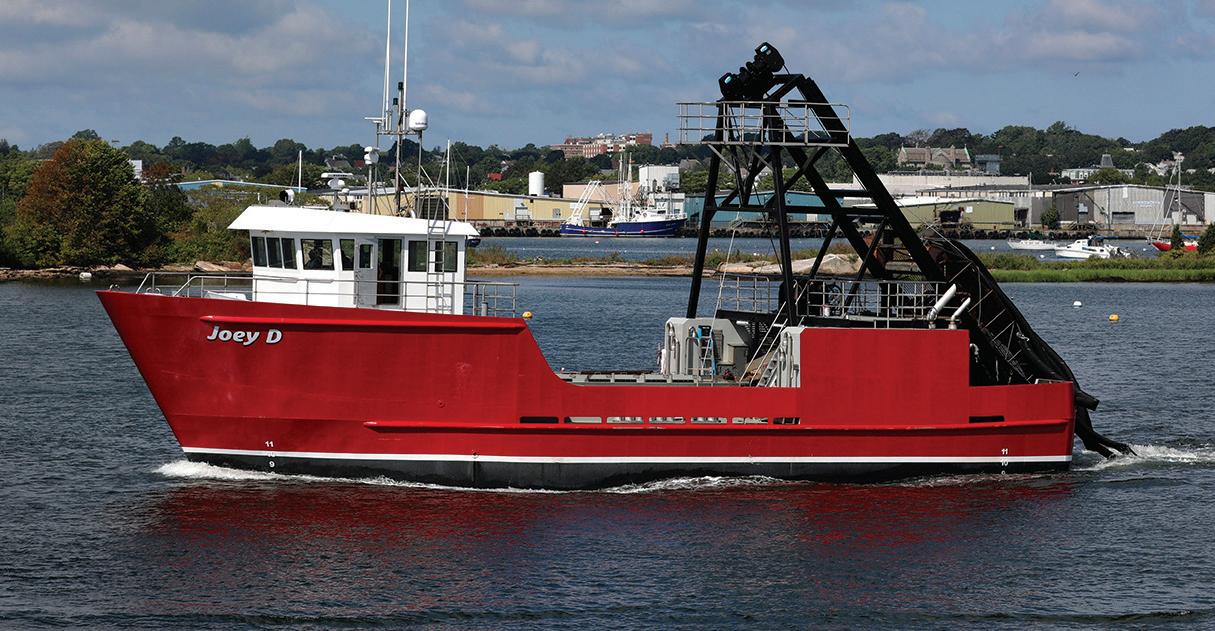
26 minute read
Around the Coasts
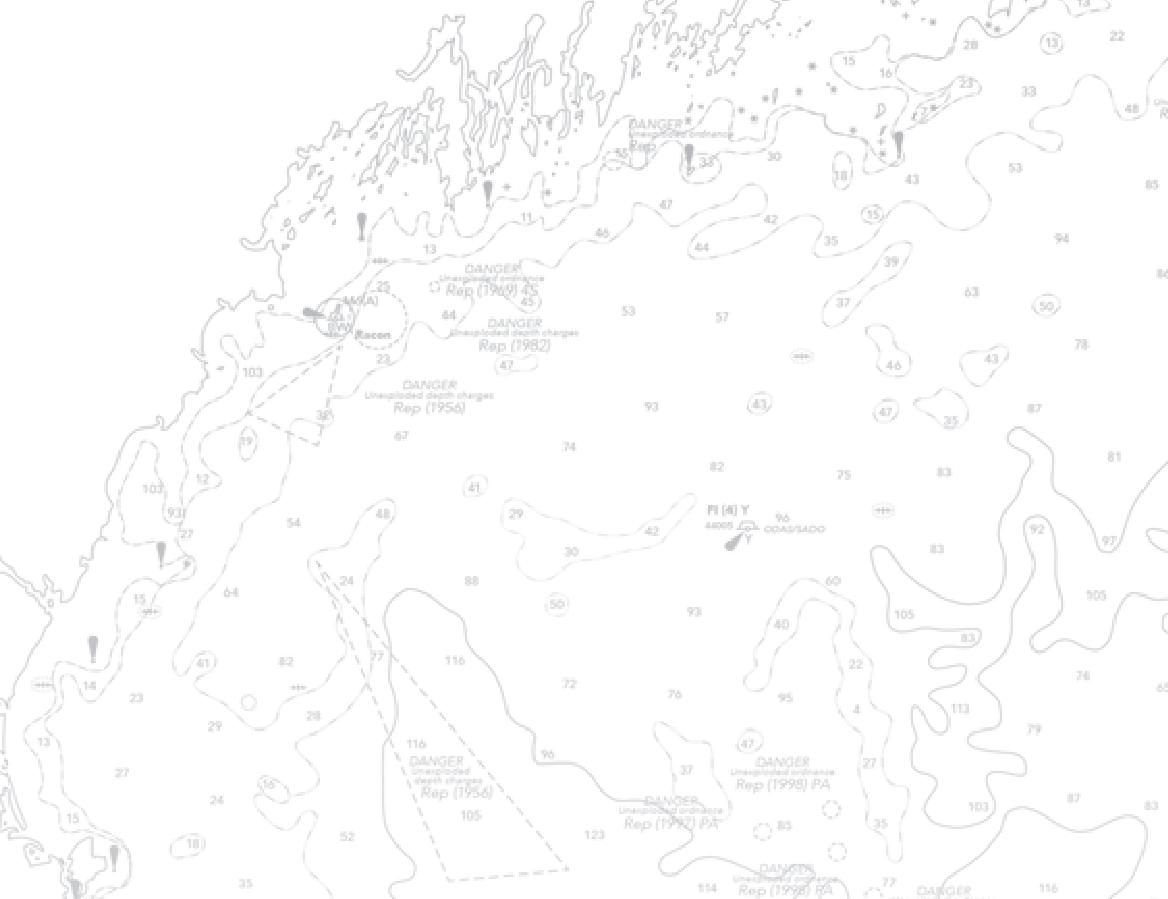
NEWS FOR THE NATION’S FISHERMEN
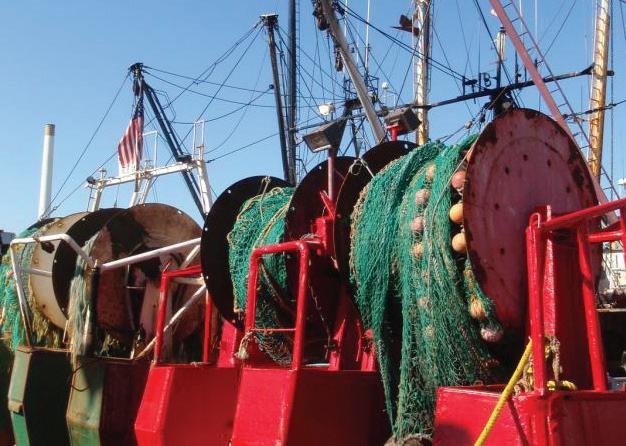

With seafood markets collapsed and boats tied up, revenue declined in the U.S. industry by 29 percent in the fi rst seven months of 2020.
Nation / World
“Over those seven months we’re looking at a 29 percent decrease.”

— Paul Doremus, NMFS acting administrator
Covid losses cost industry nearly a third in revenue

NMFS economists documented losses March-July after starting the year up 3 percent
The U.S. shing industry lost nearly one-third of its revenue in the rst seven months of 2020 as the covid-19 pandemic vaporized its major markets, according to an analysis by NMFS economists.
The year started on a high note, with revenues up 3 percent in January and February — before diving 19 percent in March and cratering at 45 percent less in July, said Paul Doremus, acting administrator at NMFS, in a Jan. 15 conference with reporters.
Cumulatively, “over those seven months, we’re looking at a 29 percent decrease,” said Doremus.
The agency mobilized its economic experts and government and academic partners in March to document the impact of the pandemic and begin preparing “as comprehensive an account as we could,” said Doremus.
The ndings were compiled in a report with more than 100 pages of supporting documents, including detailed region-by-region breakdowns, by authors and economists Rita Curtis of the NOAA Fisheries O ce of Science & Technology and Steve Kasperski of the agency’s Alaska Fisheries Science Center.
While the report only documents the industry’s situation up through July, “we’ve already initiated the work to do that next update,” said Curtis. The goal is to continue monitoring economic impacts and shermen’s response, drawing lessons and strategies for making shing communities more resilient, said Doremus.
The biggest blow early was restaurant and food-service shutdowns, which normally account for 70 percent of purchases for the $200 billion annual industry. Some sheries that supply shelf-stable product lines, such as surf clams, felt less impact, but fresh markets dried up across the board.
Among shell sh growers, 74 percent reported signi cant losses — even with limited respite when outdoor dining was allowed in summer months.
“Harvesting, processing, and distribution have been curtailed for many products and in some cases have ceased in response to restaurant and other closings throughout the country and globally,” the authors summarized. “Further, the industry’s outlook in the coming months is highly uncertain.
“However, those interviewed indicated that in contrast to the fresh sh market, consumers dramatically increased supermarket purchases in late March 2020 of shelf-stable and frozen product forms — including canned tuna, Alaska pollock and king mackerel. Figures for this surge in supermarket sales published in the seafood and food trade press ranged from over a 100 percent increase in sales of canned tuna (compared to the same week in 2019) to a percent increase in sales of frozen seafood compared to the same week last year.”
One bright spot is signs the pandemic has wrought a shift in consumer behavior, raising interest in healthy diets and more people preparing seafood at
home, said Doremus.
But the report notes “indications are not yet available as to whether or not sales of frozen and canned seafood will remain strong.
“In addition, some industry participants are shifting from supplying restaurants to expanding sales to supermarkets and to online or direct-to-consumer sales. But the extent and volume of the pivot from restaurants to supermarket and direct-to-consumer sales has yet to be estimated.” — Kirk Moore
R.I. governor Biden’s Commerce choice
Raimondo a proponent of wind power
President Joe Biden’s pick of Rhode Island Gov. Gina Raimondo to head the Department of Commerce gives her a leading role in his administration’s priority issues around the economy, environment and climate.
As secretary of Commerce, Raimondo’s portfolio includes agencies like the National Marine Fisheries Service and weather and climate science o ces. She will be at the forefront of the administration’s policies on trade.
Raimondo and her allies have ardently pursued o shore wind energy as a growth industry for Rhode Island, where the 30-megawatt Block Island Wind Farm was built in 2016 as a commercial-scale pilot project.
That established the state as a base for wind power support services. Blount Boats in Warren, R.I., built the rst U.S.- ag crew transfer vessels, operated by Atlantic Wind Transfers in North Kingstown, R.I., setting the stage for the state to be a major base for wind development o southern New England.
That has also raised con icts with the state’s commercial shing industry — particularly the squid eet, where captains say proposed turbine arrays could utterly disrupt their shing patterns.
National advocates for the shing industry praised the choice of Raimondo, while calling for her to steer a path that will allow both industries to coexist.
“In light of the increasing number of proposed actions in our federal waters, we sincerely hope Governor Raimondo’s experience working with the commercial shing industry in Rhode Island will guide her in ensuring our businesses continue to thrive,” said Leigh Habegger, executive director of the Seafood Harvesters of America, in a statement Jan. 7 as news emerged that Raimondo would be Biden’s choice.
“It is my sincere hope that Governor Raimondo carries with her the experiences and lessons learned from her time in Rhode Island,” said Christopher Brown, a Rhode Island captain and founding president of Seafood Harvesters of America.
Raimondo “will have to nd a harmonious existence for both the shing industry and the o shore wind industry. Hopefully her time in Rhode Island has granted her the wisdom to make sound choices to ensure the delivery of both,” said Brown. ‘I hope that the commercial industry doesn’t become collateral damage of greater blind ambition.” — Kirk Moore
Kenneth C. Zirkel/Creative Commons

Rhode Island Gov. Gina Raimondo has promoted offshore wind energy as a growth industry.
HYDRO-SLAVE
SAME DAY SERVICE
HAULERS AVAILABLE 8” TO 17”
• ALUMINUM BACKPLATE • POLISHED STAINLESS BACKPLATE • ALL STAINLESS HARDWARE
POWER STEERING AVAILABLE IN 5 CLASSES
• UP TO 120 FEET • STAINLESS QUADRANT ASSEMBLIES • STAINLESS HELMS
ONE TON BOOM WINCH
• AvAILABLE IN POWDER COATED STEEL OR STAINLESS STEEL • AvAILABLE WITH A HyDRAULIC BRAKE CALL FOR DETAILS
DUAL RAM QUADRANT ASSEMBLY
• 100% Stainless Steel construction • Rudder side thrust eliminated • no stress on boat timbers
5.5 HP HONDA POWER UNIT • 11GPM @ 2000 PSI 2 Stage Pump • Light, Versatile and Portable • This unit will power 10” and 12” and 14” Haulers • Ideal for outboards and other small boats • Log Splitter OUR NEW GENERATION SUPER BLOCKS • 4” Low LIP and HI LIP • 5” Low LIP and HI LIP • 2000 lb. Capacity • Sealed tapered roller bearings • Aluminum Sheaves • Stainless Sheaves
HIGH EFFICIENCY VANE PUMP ELECTRIC CLUTCHES
Call 1-800-747-7550 • Email: marinhyd@midcoast.com • Fax: 207-594-9721
MARINE HYDRAULIC ENGINEERING
17 Gordon Drive • Rockland, Maine www.midcoast.com/~marinhyd/
Alaska / Pacifi c
“In announcing the state will appeal, the governor has chosen to ignore scientifi c fact and the large majority of Alaskans.”
— Tim Bristol, SalmonState executive director
Alaska governor declares appeal of Pebble decision
State backing mine developers; shareholder group sues over misinformation
Alaska Gov. Mike Dunleavy’s Jan. 8 announcement that his state would appeal the U.S. Army Corps of Engineers’ decision to deny a permit application for the Pebble Mine set o calls for the Biden administration and Congress to extend permanent protections for Bristol Bay.
“Bristol Bay residents and Alaskans have been clear that we will not trade one of the world’s last robust salmon sheries for a gold mine, and the Army Corps decision a rmed that this toxic project is too risky for our home and does not serve the public interest,” said United Tribes of Bristol Bay Deputy Director Lindsay Layland.
“While science prevailed when the Army Corps rejected the proposed Pebble Mine’s Clean Water Act permit, Gov. Mike Dunleavy’s continued interference on behalf of the Pebble Partnership shows Bristol Bay is far from safe. In announcing the state will appeal, the governor has chosen to ignore scienti c fact and the large majority of Alaskans,” said SalmonState Executive Director Tim Bristol.
As it stands now, the Army Corps veto would not prevent the permitting process from starting anew at any time. The Pebble Corp. and Northern Dynasty hold the mineral rights and could wait to submit another permit application when a more amenable federal leadership comes along.
“The only way to stop this toxic project for good is with an EPA veto. We urge President-elect Biden and Congress to act swiftly and decisively to reenact lasting protections for Bristol Bay — a one-of-a-kind American resource,” Bristol added in early January.
Meanwhile, a group of shareholders led a class action lawsuit against Northern Dynasty, the Canadian minerals company and the parent company of the Pebble Limited Partnership, which owns the mineral rights to the Pebble deposit and has been promoting the mine to investors and engaging in the permitting process.
The lawsuit claims the company and its directors misled shareholders about the viability of the proposed Pebble Mine and that its stock prices were arti cially in ated between Dec. 21, 2017, and Nov. 25, 2020. After the Corps denied the permit application Nov. 25, the stock value took a nosedive of more than 50 percent immediately. The permit process had been considered all but dead before the 2016 election of President Trump, whose administration allegedly negotiated with Pebble o cials to allow the permitting process to run its course.
White House/Shealah Craighead

President Donald Trump meets with Alaska Gov. Mike Dunleavy in June 2019 aboard Air Force 1 in Anchorage.
Two days after the lawsuit was led, Northern Dynasty said it would le an appeal of the Corps’ decision, citing the quality of its mitigation plan to compensate for the degradation of habitat in the process of mining the deposit’s heavy metals.
“Pebble’s appeal makes clear the need for permanent protections for Bristol Bay that ensure no company, Pebble or otherwise, will be allowed to operate a toxic, large-scale hard rock mine in the waters that support our shery and all it sustains,” said Layland. — Jessica Hathaway
Dungeness crabbers strike for price deal
Cooperation grows between ports
First came whales, then came a price most West Coast Dungeness crabbers deemed too low to sh for, but after nearly two months of having their gear at the ready, San Francisco area Dungie shermen nally set their pots Jan. 11 under an “organized start” agreed to by eets out of Half Moon Bay, San Francisco and Bodega Bay to prevent a mad dash, shotgun start once a price had been agreed to.
“Holy Christ has this season been a mess,” said Dick Ogg, who runs the F/V Karen Jeanne out of Bodega Bay. “But the eet has really come together. If this works, which it looks like it will, it will be pretty amazing and will have a lasting imprint on the eet.”
Delayed twice to avoid potential gear entanglements with migrating humpback whales, the season o cially opened Dec. 23, but no gear was set, as California crabbers joined a holdout over low prices o ered by seafood buyers, with the strike covering most of the West Coast, from Newport, Ore., to all of California.
Dungeness crab shermen out of Bodega Bay, San Francisco and Half Moon Bay agreed to something new — an “organized start,” said John Barnett, commercial sherman and president of
Boat of the Month
Silver Spray
Kodiak, Alaska / Bering Sea crab, salmon tender
ill Prout never expected the
Bwheelhouse of the F/V Silver Spray to resemble his living room back at the family home in Kodiak, Alaska. In 2001, Prout and then-business partner William Jacobson bought the Silver Spray, a house-forward, steelhulled, 116-footer out of Alabama.
A 40-year Bering Sea crab veteran, Prout started running the Silver Spray himself in 2008, fishing for red king crab, tanner crab, and snow crab in the winters, while tendering for salmon in Prince William Sound in the summers.
Gradually, three of his six kids became familiar faces on the deck, and they took to the tough life of Bering Sea crab fishing in a way they did not exactly expect.
“We all thought we were going to go off to college and find other jobs,” said 26-year-old Sterling Prout.
Now, along with his brothers Gabriel, 30, and Ashlan, 24, the younger Prouts are looking to spearhead a generational shift in Bering Sea crab. They worked for their dad for several seasons. Then last summer, when Jacobson decided to sell out, the brothers saw an opportunity.
They joined two other fellow crew members — Leo Tuiasosopo and Jacobson’s son, Bill Jr. — and bought Jacobson out.
“I’ll just go ahead and say it. We have to be the youngest guys who own a boat that fishes crab in the Bering Sea,” Gabriel said.
Suddenly, the Silver Spray was a workerowned family affair, making it a charming anomaly in Bering Sea crab, where Gabriel explained that most boats are owned by deep pockets that lease to third-party crews.
Beyond having a share in the boat, every crew member on the Silver Spray also owns quota shares, which Gabriel said helps bring them together to work toward a common goal.
“You’re catching your own crab, generating revenue for yourself,” Gabriel said. “It’s already one of the toughest jobs around, but there’s definitely more of a pride aspect when you’re working on something that you actually own.”
And what does Bill Prout think of his kids following him into the fishery that is famous for being a deadly catch?
“I’m all for it,” Bill said from the Silver Spray’s boat phone. “Rationalization has made this fishery much safer. The weather’s bad? OK, we don’t have to go out and do this. You’re not pushed over the limit like we used to be.”
And while the elder Prout said his wife does a lot of praying back home in Kodiak when the family is on the water, she is excited for her kids.
The younger Prouts, meanwhile, have their sights set high as they look to combat the graying — and rusting — of the Bering Sea fleet. The Silver Spray was built in 1990 by Master Boat Builders, but it is one of the newer boats in Bering Sea fleet.
“A lot of these boats were built in the 1970s and ’80s. The steel is getting older, and the maintenance costs just keep going up,” Gabriel said. “Our real goal is keep increasing our quota share and build another vessel.” — Brian Hagenbuch
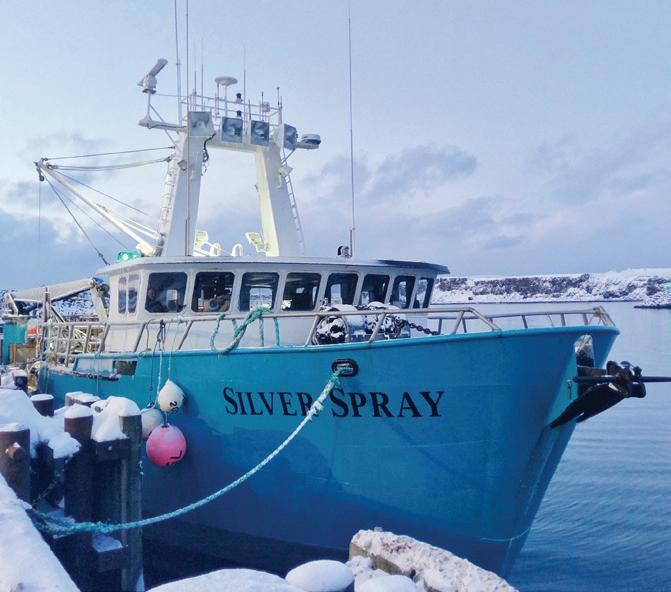
Boat Specifications
HOME PORT: Kodiak, Alaska OWNERS: Bill Prout, Gabriel Prout, Ashlan Prout, Sterling Prout, Bill Jacobson Jr., Leo Tuiasosopo BUILDER: Master Boat Builders, Bayou La Batre, Ala. YEAR BUILT: 1990 FISHERIES: Bering Sea Red King, Tanner and Snow Crab / Salmon tender in Prince William Sound HULL MATERIAL: Steel LENGTH: 116 feet BEAM: 30 feet DRAFT: 12 feet TONNAGE: 130 CREW CAPACITY: 11 MAIN ENGINES: Two Cummins K-19s REDUCTION GEAR: Twin Disc MG-516 GENSETS: Two Cummins 855, one 65kW John Deere PROPELLERS: 48-inch, four-blade bronze SHAFT: 5 inches x 12 feet, short shaft SPEED: 9 knots cruising FUEL CAPACITY: 25,000 gallons FRESHWATER CAPACITY: 9,000 gallons HOLD CAPACITY: Four tanks holding a total 420,000 pounds salmon or 220,000 pounds
the San Francisco Crab Boat Owners Association.
The fleets agreed to select a day to set gear after a price had been agreed to, followed by a 48-hour buffer before boats could begin hauling. This was put into practice with fishermen setting gear and starting after a price was secured.
Fishermen struck over a $2.50 per pound price offered by the largest seafood buyers and instead asked for a base price of $3.30, on par with the price at the same time in past years. The price combined with an anticipated meager Dungeness crab harvest this year have given fishermen more resolve to hold out for a better price. After weeks of delay, California crabbers agreed to a based price of $2.75, Ogg said.
After years of litigation over whale entanglements, increased scrutiny from regulators and delayed starts over domoic acid, Ogg sees the recent display of solidarity in the fleet as boding well for crabbers in the future.
“We all need to work together on a common goal,” he said. “We’re starting to do just that.” — Nick Rahaim
Atlantic
“These proposed modifications will affect about 2,500 lobster trap/pot vessels that will have to make changes to the way they fish.”
— Chris Oliver, outgoing NMFS administrator
New gear steps proposed to protect right whales
Area restrictions, line modifications as NMFS races for May 31 court deadline

A gathering of four North Atlantic right whales.
The National Marine Fisheries Service released its latest plan to protect endangered northern right whales from lobster fishing gear entanglements — a suite of changes that include new area restrictions, modifying gear to add weak rope into buoy lines and a new system of state-specific gear markings.
The new package of changes to the Atlantic Large Whale Take Reduction Plan is NMFS’ bid to satisfy a federal court ruling that the agency must do more by May 31, 2021, to protect the East Coast right whale population, now estimated to number fewer than 400 animals and less than 100 breeding females.
They seek to reduce the number of vertical lines in the lobster and Jonah crab fisheries by requiring fishermen to fit more of their traps between buoy lines and add weak insertions or weak rope into buoy lines, so whales have a better chance of breaking free of entanglement.
Existing seasonal restricted areas would be closed to buoy lines at times when whales are migrating, and exemptions allowed for so-called ropeless or pop-up gear, to incentivize the industry and partners to “accelerate research and development of ropeless fishing methods so that in the future, commercial fishing using ropeless technology can be used instead of seasonal closures to allow trap/pot fishing while protecting right whales,” outgoing NMFS Administrator Chris Oliver said in announcing the plan.
Advocates for the Maine lobster fishery say the last known entanglement of a right whale in Maine lobster gear took place in 2002, and since then the state’s fleet has taken proactive steps to help establish new whale conservation measures.
A public comment period opened until March 1 on the rule changes and an accompanying draft environmental impact statement.
“These proposed modifications will affect about 2,500 lobster trap/pot vessels that will have to make changes to the way they fish,” according to Oliver. “The material and labor costs caused by the proposed rule in the first year are estimated to be $7 million to $15.4 million spread out among the fishery that last year generated $485 million in fishing revenue in Maine alone.
The proposed changes are in response to an April 2020 ruling by U.S. District Court Judge James E. Boasberg that found the lobster fishery was violating the federal Endangered Species Act and that NMFS must do more to protect right whales. The agency says its plan now is estimated to reduce potential whale encounters with gear by 60 percent.
Next up for the team during 2021 will be recommending risk-reduction methods for gear in other East Coast trap, pot and gillnet fisheries throughout the whales’ migrating range. — Kirk Moore
Michigan’s fishermen fight DNR for survival
Lawsuit says state blocking licenses
Alawsuit filed against the Michigan Department of Natural Resources claims the state is withholding reissue of all commercial fishing licenses and calling for gear restrictions that will put the industry out of business.
“The things that were not renewed have been in place for well over 40 years in most cases, and the only the things that are a benefit to commercial fishers are gone,” says Amber Mae Petersen, who runs the Fish Monger’s Wife seafood retail outlet in Muskegon and serves as secretary-treasurer for the Michigan Fish Producers’ Association, which filed the suit in early January. “The answers are conflicting as to why they were not renewed. It seems off.”
For the last eight years, Michigan’s Legislature, stakeholders and
Department of Natural Resources have been collaborating on an overhaul of the state’s fishing regulations.
In 2020, state Sen. Ed McBroom proposed more than 100 amendments that DNR refused to review, claiming it would be too laborious to assess the ripple effect of those proposals on other state statutes. As a result, the Legislature declined to move the legislation out of committee as the session adjourned.
The next move from the Department of Natural Resources was to delay license applications and revert to 1929 statutes that commercial fishermen say severely hamstring their operations, including restricting whitefish trapnets to less than 13 fathoms, or 80 feet.
“The 1929 laws regulated a booming gillnet fishery that shipped freshwater fish around the world. That’s not us anymore,” Petersen says. “It is time for new laws but not laws made to help a beginning sport fishery because it’s not 1967 either. It’s 2020. There is room in the lakes for all of us, and the laws should be for a healthy commercial and sport fishery.”
In recent years, McBroom and state Rep. Sara Cambensy collaborated on bipartisan efforts to bring commercial fishermen to the table in a state that consistently regulates primarily for the recreational and charter sectors.
It was lake trout that started the
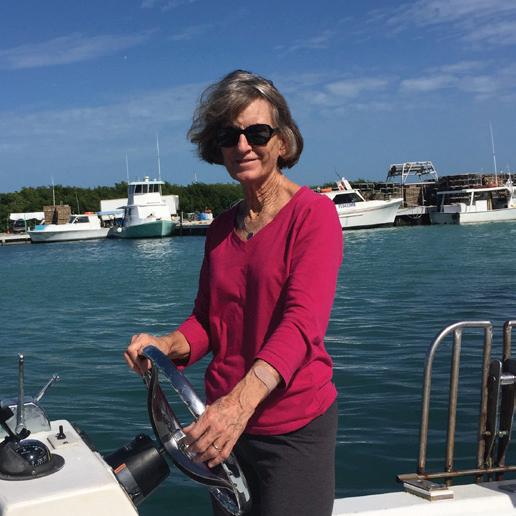
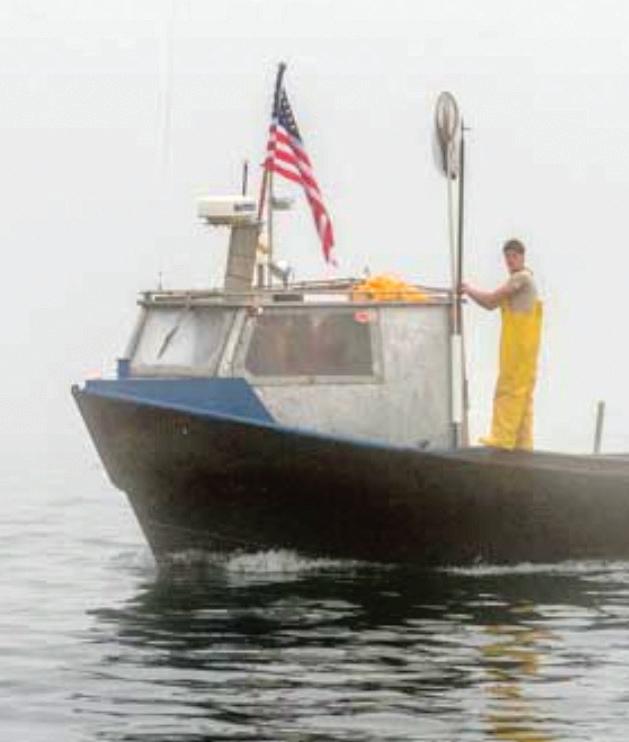
Snapshot Who we are
Mimi Stafford / Key West, Fla.
s a child growing up in central
AFlorida, Mimi Stafford made frequent trips to the Florida Keys with her family, inspiring her to seek a career as a marine biologist. Following her marriage to Simon Stafford, an Englishman she met while studying abroad in the 1970s, Mimi really wanted to introduce her new husband to the coral reefs and bountiful fisheries of the Keys.
The couple arrived in Key West in 1974 and never left.
Today, Mimi Stafford — 70 and a grandmother — runs lobster and stone crab traps with Simon out of the same wide, flat-bottomed T-Craft bay boat she’s operated since the 1990s while son Dylan, 38, runs even more lobster and stone crab traps from his much larger 43-foot Torres.
“I love the ocean. Any excuse to be out there, I look for,” Stafford said. “Being on the water and being active has kept me younger. My body has held up pretty well.”
She acknowledges some concerns for the lobster and stone crab fisheries — both of which are having a mediocre season.
“In both industries, there are a lot of unknowns,” Stafford said. “With water quality, we don’t know if it’s the aftereffects of the oil spill, red tide, the hurricanes. And there’s so much more pollution because of so many more people.” The veteran trap fisherwoman suggests that state fisheries managers push back the start of lobster harvest season, which currently opens on Aug. 6, for a few weeks so that harvesters can get better prices.
“We’re catching most of our lobster when the price is really yuck. Nobody wants lobsters in August. It makes sense to push it back so you’re not settling for the lowest price,” she said.
Keys fishermen get their highest lobster prices in early January from buyers in China who pay a premium for whole, live product.
Stafford helps to influence policy by serving on the South Atlantic Fishery Management Council’s lobster advisory board and working with the Florida Keys National Marine Sanctuary Council and the not-for-profit environmental group Reef Relief.
— Sue Cocking
most recent tug of war between commercial fishermen and recreational fishing advocates. As the lake trout population has blossomed, the commercial whitefish count as lagged.
“Lake trout and whitefish don’t coexist,” Petersen said in 2019 testimony on the Michigan House floor. “When the lake trout move in, they push out the whitefish. And so it used to be historically, commercial fishermen would then just start catching lake trout, and we would sell lake trout. And then the balance would continue.”
Commercial fishermen asked for 10 percent of the lake trout quota and 20 percent for walleye. Lake trout are often bycatch in whitefish traps, so fishermen were asking to land some of those fish rather than throwing them back.
Gulf / South Atlantic
“What’s really striking is the last six or seven years” of temperature increases.
— Russell Vose, National Centers for Environmental Information
2020 smashed records for Atlantic hurricane season
Seven hurricanes bring at least $1 billion each in damage to Southern coasts
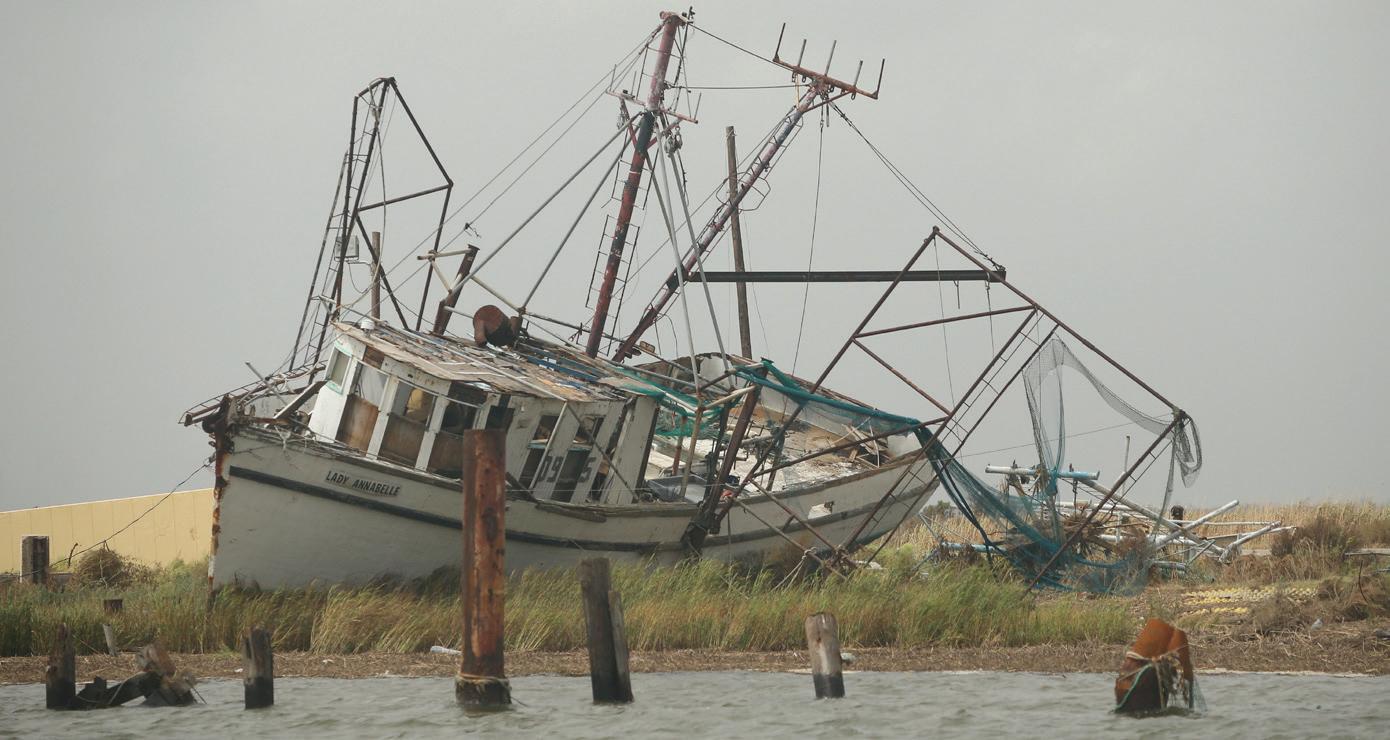
A wrecked shrimp boat near Lake Charles, La., after Hurricane Laura.
Adozen tropical storm systems made landfall on the U.S. coast in 2020, with Hurricane Laura leading among the top seven that each inflicted at least $1 billion in damage on the Gulf of Mexico and South Atlantic coasts.
The annual National Oceanic and Atmospheric Administration’s climate report shows 2020 effectively tied 2016 as the warmest year on record, said Gavin Schmidt, director of NASA’s Goddard Institute of Space Studies, said in an online presentation Thursday with Russell Vose, chief of the analysis and synthesis branch at NOAA’s National Centers for Environmental Information.
“It’s a statistical tie either way” looking at both NOAA and NASA data for 2016 and 2020, said Schmidt.
“What’s really striking is the last six or seven years” of average temperature creeping up, said Vose. “There’s been a steady increase in temperatures since the 1960s,” with temperatures rising faster in the past 50 years than the previous 2,000 years, he added.
The NOAA report catalogs new temperature records and extreme weather events around the world and across the U.S. Those impacts include an unprecedented Atlantic hurricane season.
Nicaragua was slammed by two late-season category 4 storms, Eta and Iota, that struck with two weeks, their landfalling tracks 25 kilometers (15.5 miles) apart. Twelve tropical systems made landfall in the continental U.S., breaking the previous record of nine landfalls set in 1916, the report notes.
Seven of those ravaged the Gulf of Mexico and South Atlantic coasts with at least $1 billion each in damages — led by Hurricane Laura, a category 4 that slammed into the western Louisiana coast around Lake Charles, La.
The overall Atlantic tropical season produced 30 named storms, breaking the record of 28 set in 2005. Worldwide, 103 named tropical systems arose in the world’s oceans, tying the number from 2018, said Schmidt.
One aspect is how scientists calculate the North Atlantic accounted for about 30 percent of the total energy generated by tropical storms in 2020 — twice the normal annual proportion, he said.
In the Arctic, a mild winter and record summer heat over Siberia were recorded as Arctic shipping lanes offshore had an open-water season over 100 days, said Vose: “The northern sea route finally froze in November.”
“We estimate that the Arctic as a whole was warmer,” said Schmidt. The seasonally shrinking Arctic sea ice was smallest in average extent since 2016, he said.
— Kirk Moore
Mississippi shrimpers catch for food banks
Effort delivers enough for 36k meals
Early this year, Mississippi food pantries received deliveries of locally caught, processed and packaged shrimp, harvested by members of Mississippi Commercial Fisheries United.
A $50,000 Catch Together grant facilitated by the nonprofit Extra Table helped Mississippi Commercial Fisheries United purchase 20,000 pounds of local heads-on shrimp. The
Dawn Ross
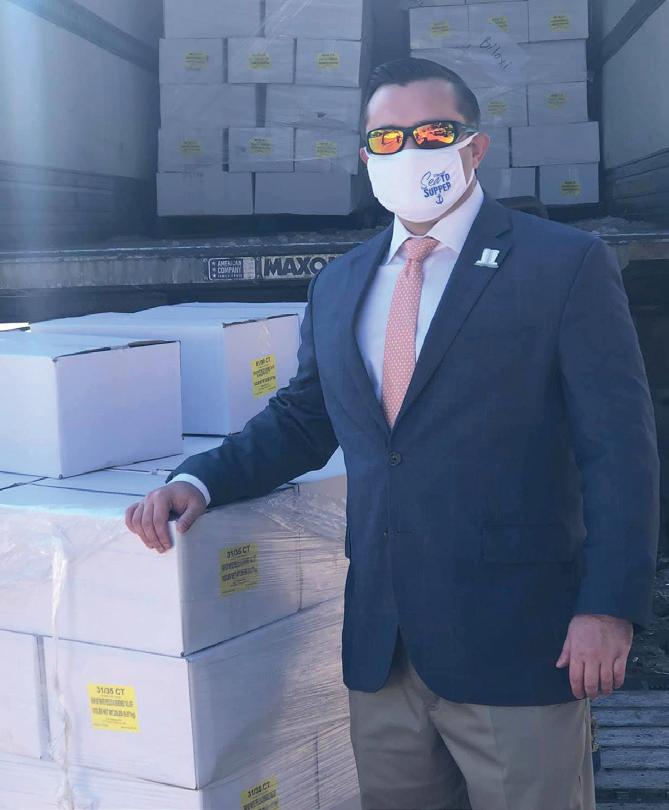
Ryan Bradley, executive director of Mississippi Commercial Fisheries United, helps deliver 13,000 pounds of local shrimp.


shing organization coordinated with processors to have the catch processed and peeled, resulting in 13,000 pounds delivered to families in need across the state in 2-pound frozen bags, comprising 36,000 meals.
“It was a wonderful opportunity, and it was a great feeling,” said Ryan Bradley, executive director of Mississippi Commercial Fisheries United and an NF Highliner. “I got to tag along when Extra Table was distributing those shrimp. It’s not every day they get fresh seafood in these local food banks.”
Mississippi food banks are reporting a 30 to 50 percent increase in need as a result of pandemic-related hardships. The dramatic shift in market demand has a ected shermen, as well.
“With demand from restaurants all but gone, this year has been a challenge for our members,” said Bradley. “This e ort not only supports these local shermen and their families during a di cult time, but also lets them support their fellow Mississippians with fresh, nutritious food.”
Catch Together, working with Multiplier, plans to issue more than $5 million in grants around the country to aid shermen in providing sh for local food banks. The initiative is part of Catch Invest, which was founded as a national permit-banking organization.
“The goal of this program was to buy local shrimp,” said Bradley. “We were able to make sure the shermen got a fair price for their shrimp.”
There should be more to come from the Catch Together grants this year, Bradley added.
“These types of community e orts have never been more important,” Martha Allen, executive director of Extra Table, told the Northside Sun. “Hunger was a critical issue well before the pandemic, and we are grateful to be working with Mississippi shrimpers and other organizations to help our neighbors during this time of crisis.” — Jessica Hathaway






Cook Inlet, Alaska
Caden Culbert, Jason Hudkins, Dawson Tucker, Sarah Hudkins, Kaitlyn Steffy, Jordana Coykendall and Gavin Hudkins setnetting on Salamatof Beach in Kenai’s Cook Inlet.
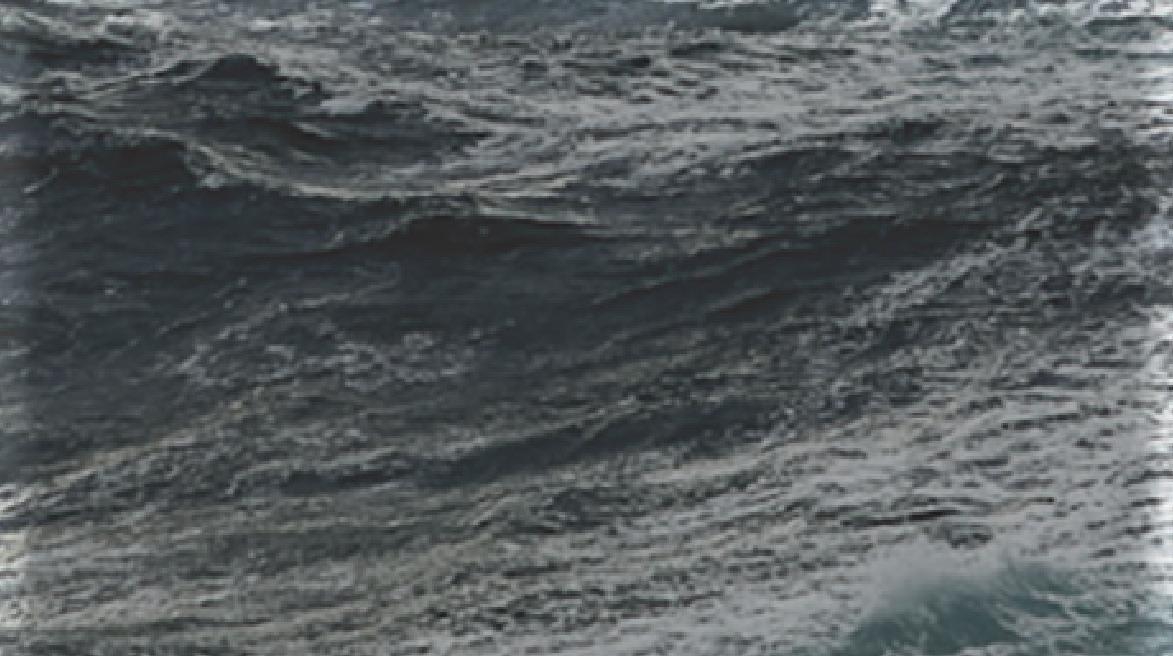



Coffee Point, Alaska
Alex Johnson, Kitty Tolman, Sean Braman, Niki Riga, Christopher Riga, Nolan Braman and Tammy Braman, the 2020 setnet crew at pickup in Bristol Bay’s Coffee Point.
This is your life. Submit your Crew Shot www.nationalfi sherman.com/submit-your-crew-shots






